Y4. Lesson 24. Composers - Antonio Vivaldi
Prior learning: None
Duration: 30 minutes
Materials: Woodblocks or claves
Keywords: Beat, rhythm, singing, chanting, partners, rhymes, circle games.
Difficulty: ![]()
Prepare
Present
Composers - Antonio Vivaldi
Practise

Antonio Vivaldi (1678–1741) was an Italian Baroque composer and virtuoso violinist best known for his iconic work The Four Seasons, a set of violin concertos that vividly depict scenes of nature. A prolific composer, Vivaldi wrote over 500 concertos and numerous operas, sacred choral works, and chamber music. His dynamic style, marked by bold rhythms, dramatic contrasts, and rich harmonies, helped shape the development of Baroque music. Known as "The Red Priest" due to his red hair and priestly ordination, Vivaldi's music continues to captivate audiences with its energy and emotional depth.
 Melodic development
Melodic development
![]() Students listen to the opening of Spring from Vivaldi's Four Seasons.
Students listen to the opening of Spring from Vivaldi's Four Seasons.
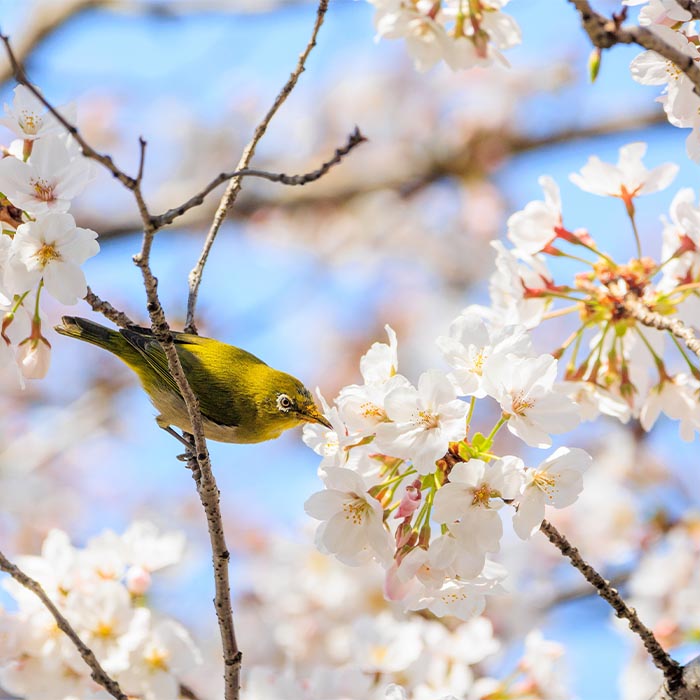
- The opening of Vivaldi’s “Spring” from The Four Seasons is one of the most iconic pieces of Baroque music, vividly depicting the arrival of spring through bright, lively music.
- Play the track, edited to 1:30 to maintain students' attention.
- Discuss the full-string orchestra and solo violin in the opening joyful and energetic passage. How does it make students feel? Does it feel like music that represents spring? Ask for reasons.
- Discuss how the melody has quick, light, repetitive patterns, evoking the sound of birds singing and the freshness of spring. The violins lead with rapid, ascending notes that mirror springtime's excitement and renewal.
- The solo violin plays an essential role in this movement, often taking the lead in imitating natural sounds.
- Discuss the solo violin’s passages mimicking the delicate fluttering of birds’ wings or the bubbling of brooks. Ask if any other instrument would work as well.
 Rhythmic development
Rhythmic development
![]() Students investigate the rhythmic elements within the music.
Students investigate the rhythmic elements within the music.
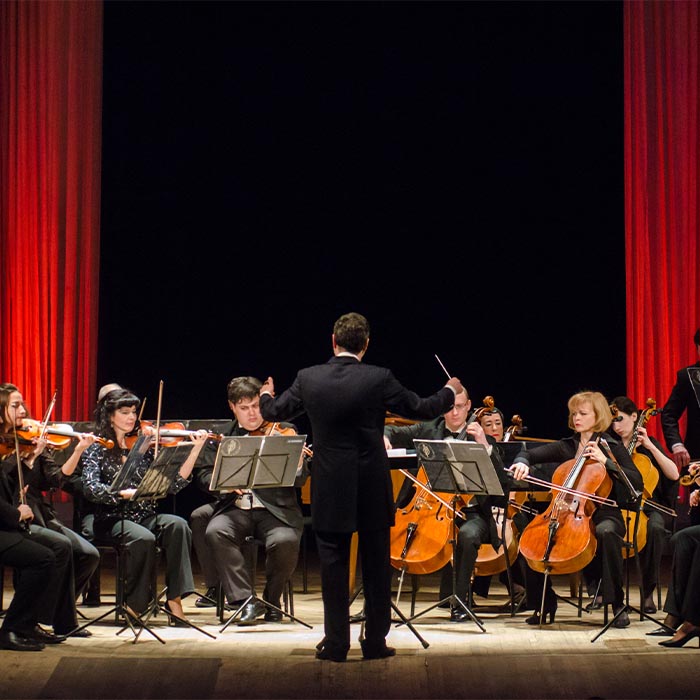
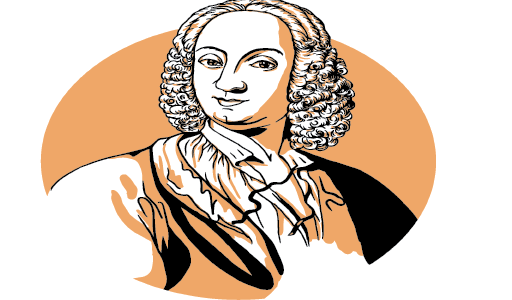
- Play the track again. Discuss how the piece begins at a fast tempo, representing the excitement of spring’s arrival.
- Ask what Italian word describes lively or cheerful music [allegro]
- Ask if the fast tempo helps students associate rhythm with movement and energy, like animals scampering or flowers growing quickly.
- The string section plays short, detached, bouncy notes. What is the name of this technique [staccato]
- These rhythms resemble the chirping of birds, a key element in the spring imagery. Ask students to imitate this by clapping or tapping in short, quick bursts, making the rhythm feel like little "bird hops."
- Vivaldi uses repeating rhythmic patterns in the piece. What word is used to describe this? [ostinato]
- Ask what metre the song uses [quadruple or 4-metre]. Ask students to count and clap the beat when you play the track.
- The rhythm is crafted to imitate natural elements like flowing water or gentle breezes. In the opening of Spring, ask if students can hear these rhythms in the violins, which create a flowing, bouncy rhythm that mimics the lightness of nature waking up.
- Encourage students to explore the rhythm using body percussion. For instance, have them tap their laps for the softer, lighter rhythms and stomp their feet for the stronger beats. This connects movement with rhythm and helps reinforce the tempo and articulation.
 Creative movement
Creative movement
![]() Students listen to music and express themselves through dance movements.
Students listen to music and express themselves through dance movements.
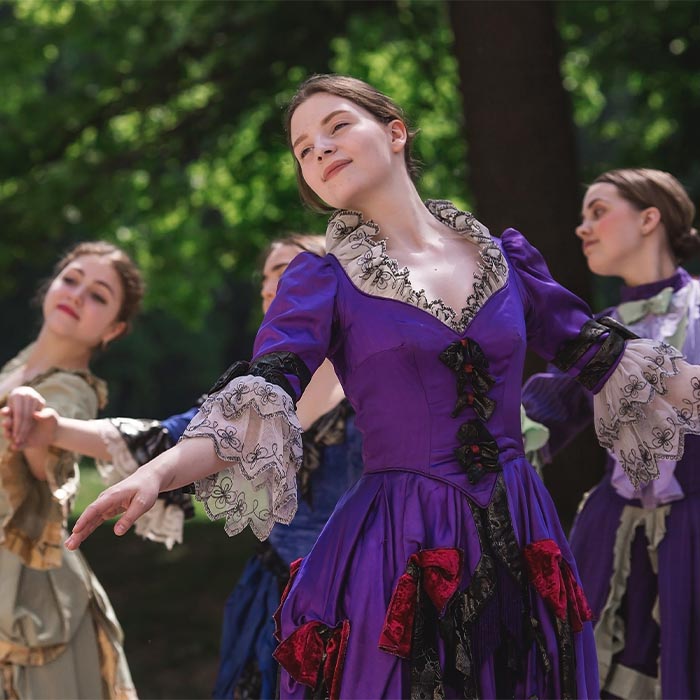
- Teach that Vivaldi's Four Seasons has four music pieces: Spring, Summer, Autumn and Winter.
- Play the Autumn track and tell students that it portrays the joy of a successful harvest. Ask if they know what a harvest is.
- Have students immerse themselves in a lively village harvest festival.
- Encourage them to move in a way that expresses the joy and energy of the music. This freedom of expression will make them feel free and creative.
- Prompts can include "Pretend you’re dancing at a big party after a long harvest!” or “Can you clap and stomp in rhythm with the music like the villagers might?”
- Group Activity: Divide the students into pairs or small groups. Each group can take turns leading the "harvest dance," moving to the music and inspiring others to follow. They can incorporate gestures like holding hands and swinging around, mimicking traditional folk dances.
 Listening
Listening
![]() Students listen to Vivaldi's Winter 2nd Movement.
Students listen to Vivaldi's Winter 2nd Movement.
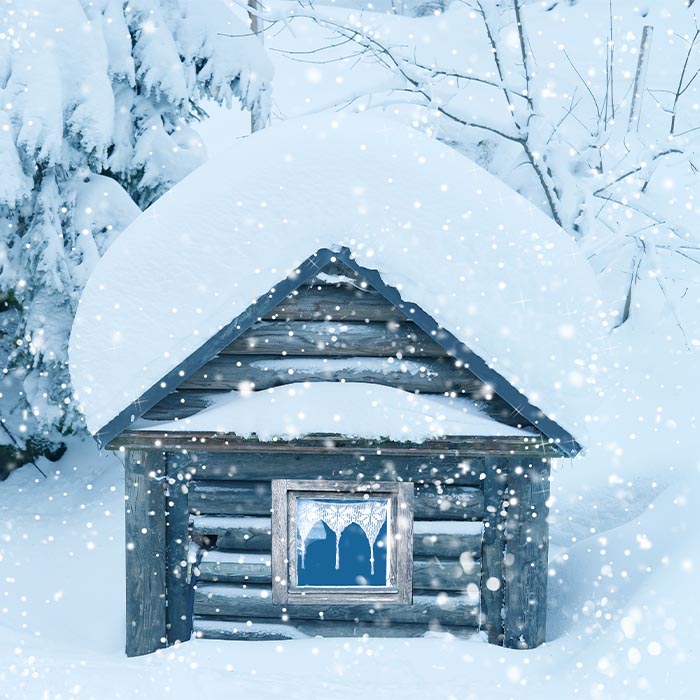
- Begin by asking, "What do we do to stay warm in winter? How do you feel when you're inside, cosy by a fire, while it’s cold outside?" Allow students to share experiences of being warm and comfortable during winter.
- Explain that in Vivaldi's Winter, he creates music that sounds like someone resting by a fire, sheltered from the cold.
- Play the track and ask students to close their eyes and imagine they are inside, warm and safe, watching the snow fall quietly outside.
- Reflection Questions:
- "How did this music make you feel?"
- "Did it sound fast or slow, loud or soft?"
- "What do you think Vivaldi is trying to describe in this music?"
- Ask, "Is this music faster or slower than the music in Spring and Autumn? What kind of mood does a slow tempo create?"
- Point out the long, flowing violin melody that sounds peaceful and reflective, like watching the snow gently fall. Ask, "How does the violin sound? Legato or staccato? What does it remind you of?"
 Visual learning
Visual learning
![]() Students discover images connected to Vivaldi.
Students discover images connected to Vivaldi.
- Project the image gallery.
- For the first image, ask students which instruments they recognise. Ask if anyone knows what the keyboard instrument is called [harpsichord]
- Ask who is represented on the postage stamp [Vivaldi]. What instrument is he holding? Why is he holding it?
- The third image is of Venice, where Vivaldi lived and worked most of his life. What is unusual about the picture [the water is very high, and boats are moored]
- The fourth image also shows Venice. Ask why there seem to be no streets to walk or drive on [Venice sits below sea level]
 Instruments
Instruments
![]() Students
Students
 More information
More information
![]() Additional information
Additional information
- Antonio Vivaldi was a great Italian composer and violinist who lived in Venice during the Baroque period over 300 years ago. He was called "The Red Priest" because of his red hair and because he became a priest, though he focused more on music than church duties.
- Vivaldi wrote hundreds of pieces, especially for the violin, making the instrument sound lively and exciting. His most famous music is The Four Seasons, where each part describes a different season—spring with singing birds, summer storms, autumn harvest dances, and winter’s icy winds. Vivaldi worked at a music school for orphaned girls, where he taught, composed, and led performances.
- Vivaldi was a musical genius with a talent for creating music that told stories through sound. His melodies could mimic the sounds of nature and everyday life, a unique approach that set him apart from his contemporaries. Although his music was forgotten for many years after his death, it was rediscovered in the 20th century, a testament to the enduring appeal of his work. Today, his music is enjoyed worldwide for its energy, creativity, and joyful spirit.
 Assess
Assess
Suggested lessons
Y1. Beat II

Y1. Beat III

Y1. Beat IV

